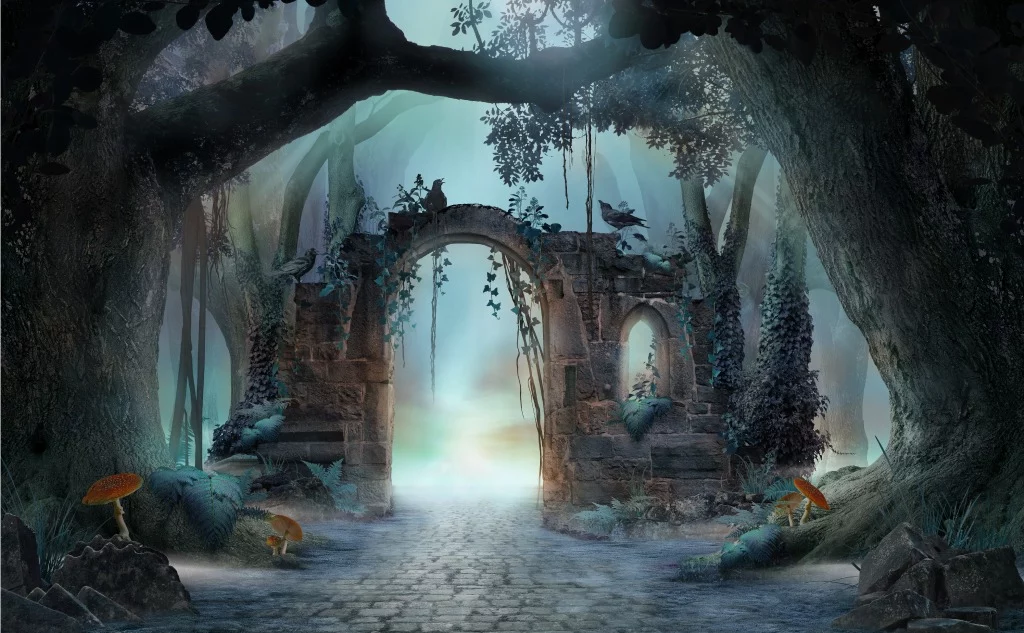Here’s the difference between undertones and overtones:
Overtones are more conscious and intentional.
Undertones can be unconscious and even unwitting.
Over- and undertones are accompanying characteristics to a thing and not the thing itself.
If you want to know all about the difference between an undertone and an overtone, then this article is for you.
Keep reading!

What Are the Differences Between Undertone and Overtone?

| Undertone | Overtone | |
| Definition | A secondary or underlying quality or meaning without expressing it directly | A quality or an idea that is suggested or implied without openly expressing it |
| How it’s expressed | Undertones are a more unintentional or unconscious way of suggesting ideas | Overtones are conveyed in a more intentional or blatant manner |
| Scope | The author’s emotion or attitude revealing itself to the reader perhaps without the intent of expressing so | The author’s attitude, bias, or slant toward an idea or subject is uncovered when “read between the lines” |
| Nature | Hidden “under the surface” but can be unconscious or unintentional | Hidden but done so more consciously or intentionally |
| Specificity | A secondary message (or sub-messages) that is invisible on the surface-reading | An idea with clear intent or meaning but “masked” so as not to openly express it |
Undertones and overtones are two incredibly similar words, so it can be a bit hard to pinpoint the differences between them at a glance.
They are, after all, often used interchangeably.
As a result, there’s a very real debate to be had about how different they truly are in the modern era.
Language is ultimately determined by usage, so it’s entirely possible that one of these terms may be phased out of the language eventually due to overlap.
For now, though, both words do exist, and there are some nuances to their meanings that can be explored.
So let’s devote a few moments of our time to the differences between an undertone and an overtone.
What Are Undertones?

Undertones typically refer to messages that are covertly carried or hidden beneath a conversation or literary work.
More specifically, it refers to those messages that appear as being delivered “under the radar” compared to the more explicit messages and contents being communicated.
An undertone can be ethical, political, religious, or emotional in nature.
It will typically present itself as a difficult-to-describe abstract message that bubbles under the surface of the main work.
One example of a famous work with Christian undertones is J.R.R. Tolkien’s The Lord of the Rings.
There is a clear and absolute divide between right and wrong in the fictional world of Middle-earth.
At no point is Sauron’s evil questioned, and there are clear points in the lore when a character switches from good to evil completely, with little gray area.
Additionally, the necessity of sacrifice and suffering as a means to achieve salvation, which in this case manifests itself as freedom from the evil forces of the world, is indicative of a specifically Catholic mindset.
At no point do the undertones undermine or overwhelm the greater explicit battles between good and evil in the text, and it’s entirely possible to read through without once thinking of Tolkien’s fantasy world as a construct influenced by religious beliefs.
It’s possible or even likely that Tolkien never intentionally set these undertones, and they could just be a natural result of the writer’s beliefs.
This obscured near-invisible state is what best defines an undertone.
By their very nature, undertones tend to be hard to pin down easily and rarely represent anything definitive.

And, as with Tolkien’s work, they are very often a result of the writer’s leanings rather than an intended effect.
Another famous example of undertone appears in The Chronicles of Narnia by C.S. Lewis.
In a similar vein to Tolkien, this is another example of a work with Christian undertones.
Having converted into adulthood, Lewis has explicitly stated in interviews that the undertones were not sought after on purpose and that they emerged organically as he was writing.
The most obvious example, which has become a part of popular culture and has even been parodied in the past, is the kingly lion Aslan who has been brought up for his parallels to the death and revival of Jesus Christ.
Readers almost immediately took his sacrifice for Edmund and his miraculous return to be a symbolic retelling of the famous biblical resurrection.
But as with the previous example, the book itself is not explicitly about religion so much as it is about adventure and, in this case, coming of age.
The undertone is significant and meaningful but is not the centerpiece of the text.
What Are Overtones?

An overtone is typically seen as something much more blatant than an undertone.
Overtones may not be explicitly stated, but they tend to overshadow the explicit message of the work, often in a way that draws criticism.
An overtone is essentially what happens when an undertone is made too obvious, to the point of being somewhat overbearing.
It should be noted that this usage of overtone is becoming increasingly rare as time goes on.
Nowadays, you’re less likely to hear someone use an overtone to describe such a message and more likely to hear the phrase “strong undertone.”
This may be indicative of an eventual move away from the word overtone, but that remains to be seen.
Still, that’s a good way to define exactly what an overtone is in terms of literature.
You might hear someone say, “I was kind of turned off by the strong political undertones.”
This is a strong indication that the work they’re referring to actually had political overtones.
This does not mean that you should go around correcting everyone who talks about “strong undertones” though before anyone gets excited at the prospect.
As stated previously, language is ultimately determined by usage.
Suppose the majority prefers to use the phrase “strong undertones” for a long enough period of time.
In that case, this particular usage of overtone will undoubtedly fade out over time, and that’s perfectly normal.
Until that happens, though, the term overtone does essentially mean the same thing, more or less.
Overtones don’t necessarily have to be offensive in their execution, though.
In the 2009 hit movie Avatar there is a blatant racial overtone in the dynamic between the humans and the blue-skinned aliens.

The humans initially see the aliens as their savage, uncivilized enemies, creating a clear and blatant parallel to events of human history, in particular in instances of colonialism and the sudden marginalization of native tribes.
But the movie doesn’t just leave it at that, choosing to use its overtones to tell a compelling story about overcoming racial perspectives through the clever use of its protagonist, who can integrate with the alien society using a proxy body.
This is a rare example of an overtone used constructively in a work of fiction, and the racial overtone is purposely woven into the positive main messages of the overall film.
Overtone and undertone ultimately both have their place in the telling of a narrative.
Whether the secondary tones of the work are hidden carefully beneath the surface or shoved right onto your lap, they are virtually guaranteed to play an important role in crafting the fictional world of the piece.
